Syn.: Anthopogon macounii (Holm) Rydb., Anthopogon procerum var. tonsum (Lunell) Lunell, Gentiana detonsa var. tonsa Lunell, Gentiana gaspensis Vict., Gentiana macounii Holm, Gentianella crinita subsp. macounii (Holm) J. M. Gillett, Gentianopsis procera var. gaspensis (Vict.) Iltis, Gentianopsis procera subsp. macounii (Holm) Iltis, Gentianopsis virgata subsp. macounii (Holm) J. S. Pringle
Family: Gentianaceae Juss.
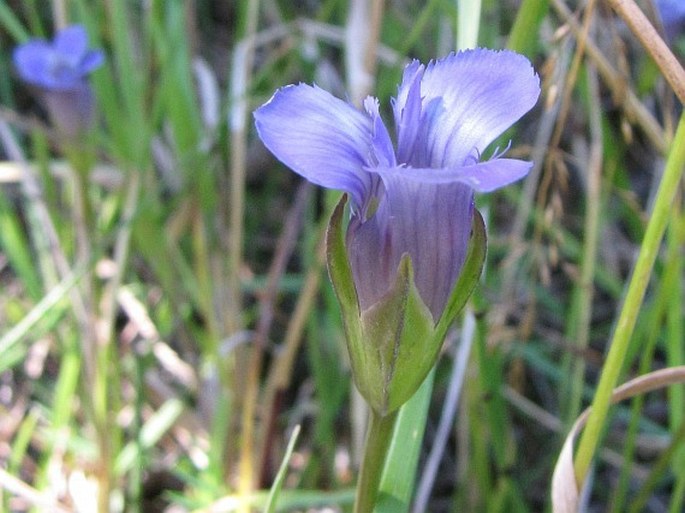
Distribution: North American species found in a large part of Canada (from Yukon to Quebec), and north of US (from Montana to Minnesota).
Ecology: Grows in wet meadows, wetlands and banks of streams in foothills and mountains in elevations from 700–2200 m. Blooms in August.
Description: Annual herb, 15–40 cm tall; stem erect, single or branched. Basal leaves oblong to lanceolate, 1.5–4 cm long, drying early, stem leaves in 2–4 pairs are opposite, narrow lanceolate, 1.5–5 cm long. Flowers are solitary, borne on long erect stalks, tube-shaped, tetramerous, calyx 15–25 mm long, reaching to about middle of corolla, corolla 2–5 cm long, dark blue to purple, petals rounded at tips and fringed, opening only in sunlight. Fruit is a capsule, 3–4 cm long.
Note: The genus includes about 24 species, found in Europe, Asia and North America. In Czechia we find only Gentianopsis ciliata.
John Macoun (1831–1920), whose name had been given to this gentian, was an Irish botanist, who immigrated to Canada in 1850 and was elemental in exploration of the local flora.
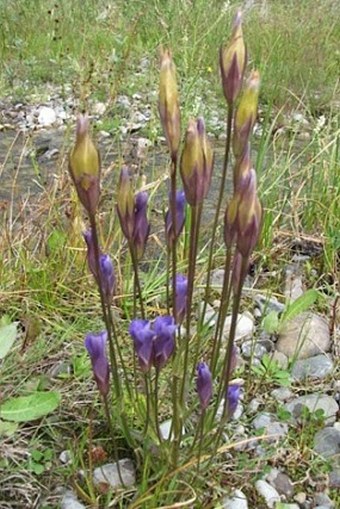
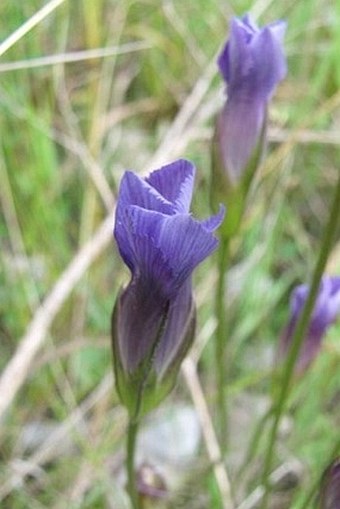
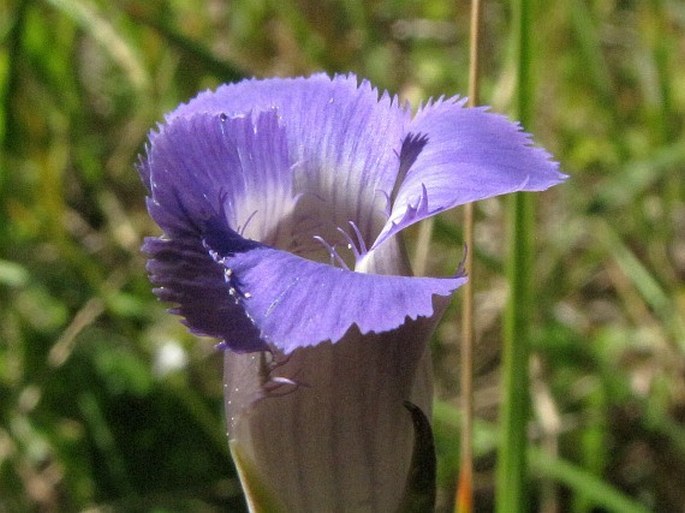
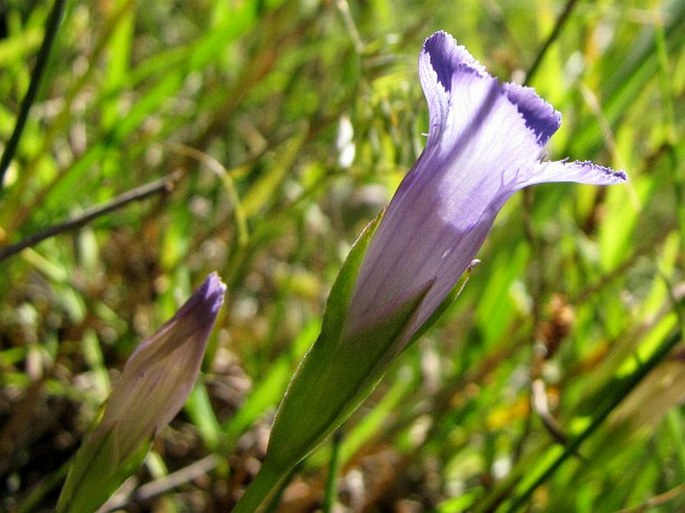
These images were taken in Canada, Alberta, Calgary, Beaverdam Flats Park (August 2013).


